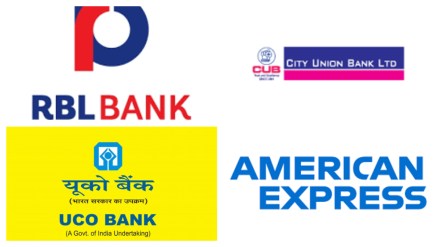In December 2024, key banking developments in India attracted attention, including ESIC’s potential changes to wage ceilings, American Express’s sustainability initiative, and RBL Bank’s stock decline. City Union Bank saw a surge in share prices, while UCO Bank faced a drop despite earlier gains.Here’s a list of topics that’s trending in December so far-
ESIC
In December 2024, several important developments took place concerning the Employees’ State Insurance Corporation (ESIC). The Modi government is considering increasing the monthly salary limit for workers eligible for ESIC and the Employees’ Provident Fund (EPF) schemes to Rs 30,000, aligning the wage ceiling for both schemes.
On December 19, the Kerala High Court ruled that ESIC cannot deny medical reimbursement for treatment in non-ESIC-approved hospitals, as seen in a case involving a liver transplant. Additionally, ESIC reported a 3 per cent increase in new subscriber enrollments, with 17.80 lakh new registrations in October 2024. Furthermore, 21,588 new establishments were added to the ESIC scheme that month, extending social security coverage to more workers.
RBL Bank
RBL Bank’s stock dropped 15 per cent in December 2024, falling from a monthly high of Rs 179 on December 11 to Rs 152.79 on December 23, with a significant decline occurring on December 20. The stock dropped by 4 per cent on December 2 after the bank announced that it had reached a mutual agreement with its co-branded credit card partner, Bajaj Finance, to cease issuing new credit cards due to Bajaj Finance’s decision to exit the co-branded credit card business.
Additionally, RBL Bank updated its fixed deposit (FD) interest rates, effective December 15, 2024. The revised rates now range from 3.50 per cent to 8 per cent for general citizens, with senior citizens and super senior citizens earning higher rates of 8.50 per cent and 8.75 per cent, respectively, and the highest rate of 8 per cent offered on FDs maturing in 500 days.
City union bank
In December 2024, City Union Bank’s stock closed at its lowest level of Rs 174.55 on December 23, marking a 6.6 per cent drop for the month. The stock had reached a 52-week high of Rs 187.5 on December 9, reflecting strong performance and investor confidence. The bank’s positive outlook was further reinforced by a ‘Buy’ recommendation from MarketsMOJO, a well-known stock market analysis platform.
City Union Bank’s strong quarterly results showcased improvements in key metrics such as asset quality, profitability, and net interest income (NII). The bank successfully reduced its gross non-performing assets (GNPA) to 3.54 per cent in Q2FY25, down from 4.66 per cent in the same quarter the previous year, while net NPAs also improved to 1.62 per cent from 2.34 per cent in Q2FY24.
UCO bank
UCO Bank’s stock dropped 13.5 per cent in December 2024, falling from its one-month high of Rs 50.4 on December 4 to close at its lowest level on December 23. The stock declined for the fifth consecutive session on December 23, trading at Rs 43.71, down 1.06 per cent for the day.
Despite this, UCO Bank’s shares saw a notable 9 per cent increase earlier in the month, driven by investor optimism around a potential cash reserve ratio (CRR) cut by RBI Governor Shaktikanta Das. This rally was part of a broader surge in PSU bank stocks, which saw gains of up to 9 per cent as investors anticipated positive moves from the Reserve Bank of India’s rate-setting panel.
American Express
In December 2024, American Express, in collaboration with Safe Water Network, launched Program Vasundhara, a three-year initiative aimed at promoting environmental sustainability, biodiversity conservation, and climate resilience in Bengaluru and Gurugram.
The program will focus on water resource management, sustainable agriculture, biodiversity, and renewable energy to support India’s climate goals. A key project under the initiative includes the construction of an 18-million-liter rainwater harvesting structure near Aivarakhandapura Lake to improve local water availability and reduce reliance on external sources, strengthening the community’s resilience to water challenges.
